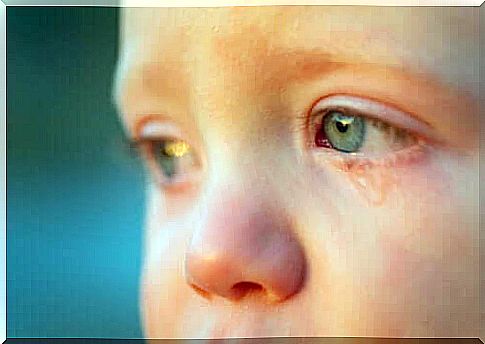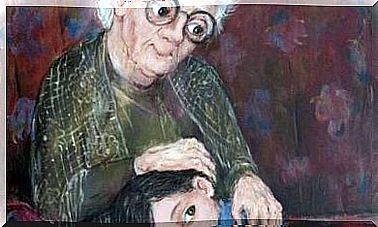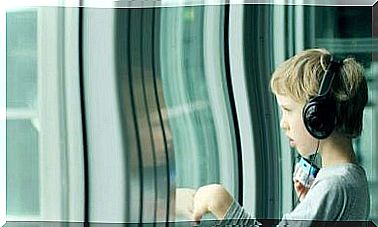How Do You Know If A Child Is Sad?

It is important for parents and teachers to know how to identify that a child is sad as opposed to angry or just in a bad mood, because the motives that lead to one or another mood are very different. Grief is a state of mind that is much more complicated for the little ones to navigate and deal with.
To help children overcome their grief, we must first know how to identify when a child is sad. In other words, we must be able to recognize the symptoms of grief and then try to discover and understand the causes behind it.
Sorrow, a basic feeling
Just like fear, anger, disgust, happiness and surprise, grief – according to psychologist Paul Ekman – is one of the six basic feelings. From a psychological point of view, grief has an adaptive function. In other words, it is an emotional reaction that serves to distance us from painful situations.
Grief helps to heal the wounds and the pain that negative situations and significant losses give rise to. However, it can also take over people’s lives when things do not meet their expectations and they feel disappointed, or when many of the situations in their lives are more difficult or more complicated than they are happy and pleasant.
Because of this, it is important to emphasize that grief and dealing with it can manifest itself in different ways. In addition, this depends on the stage of development you are in, your personality and specific characteristics. At the same time, it also depends on one’s life experiences and background.
Symptoms and reasons for grief
When it comes to adults, grief often has to do with losses, divorces and other complicated and painful situations. When a child is sad, it can also have to do with the loss of a person close to them, but children can also feel sad due to other circumstances or events that have more to do with their age.
Moving to another city, changing schools or being far away from friends can all be reasons for grief in children. The same applies to the loss of a pet or not seeing a loved one for a long time, for example when parents go through a separation or divorce. In fact, even things like changing bedrooms and no longer sleeping with a brother or sister can lead to grief in children.
Symptoms of grief are usually crying, lethargy and apathy. However, there are many other symptoms that may be less obvious, such as lack of appetite, increased appetite, difficulty concentrating, lack of motivation or an excessive need for sleep.
On the other hand, grief can also occur in the form of insomnia and even episodes of anxiety.
How to recognize when a child is sad
The symptoms of grief in children are similar to the symptoms we experience as adults. But depending on a child’s developmental stage, it is more difficult for them to recognize themselves when they are sad. And it is even more difficult for them to identify the causes and motives that give rise to this feeling.
The symptoms of grief in children
Parents need to pay attention to the following:
- Sudden changes in the child’s behaviors or attitudes that last a long time.
- The baby may cry all day and, sometimes, for no apparent reason.

- When they feel sad, children can eat more and do so with some anxiety. Or they can eat less, even when it comes to their favorite snacks and dishes.
- Their sleep cycles can change quite radically in a short time. For example, they may sleep more or less hours than usual, or wake up many times during the night.
- Children who feel sad can also become more isolated, both from their family and friends.
- If you notice that they seem absent or busy, that they go “in their own thoughts” and do not focus on what to do, it can also be a sign of sadness. In other words, they have difficulty concentrating and completing regular tasks or schoolwork.
- Sad children can talk and communicate less than they usually do, both at home and at school.
- They seem bored, apathetic and unmotivated. They lack the energy to do things, including games and activities with people they used to enjoy playing with.
- Sometimes children can become aggressive or easily irritated. For example, they may respond with sudden gestures such as being pushed, swearing, or raising their voice.
Recognizing when a child is sad and helping them feel better again
Grief is different from a normal outburst of rage and at the same time it is something completely different than childhood depression. Unlike grief, tantrums are temporary and the result of more trivial reasons. Depression, on the other hand, is a disorder and relates to a more complex situation than grief.
The better adults are at recognizing when a child is sad, the easier it will be for them to help the child navigate and manage their emotions. And so, by listening, with love and understanding, parents can help turn the situation around for the better.









